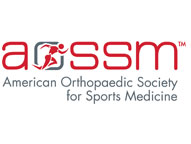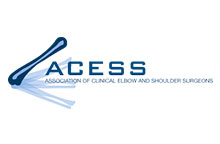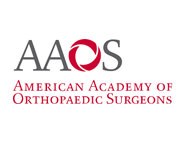Overview
There are four main knee ligaments that stabilize the femur bone on the tibia: The anterior cruciate ligament (ACL), posterior cruciate ligament (PCL), medial collateral ligament (MCL), and lateral collateral ligament (LCL/posterolateral corner). Injury to more than one knee ligament is termed a multi-ligament knee injury. The most common multi-ligament knee injury is an ACL/MCL injury. This injury commonly occurs in sports and fortunately, the MCL portion of this injury usually heals without surgery, so the knee is commonly treated for the ACL injury only with reconstruction. Rehabilitation and surgery for an ACL/MCL injury is commonly no different than that of an isolated ACL injury.
With higher energy injury to the knee (motorcycle accidents, car accidents, contact sports injuries), a knee dislocation or true bi-cruciate (ACL/PCL) injury can occur. With injury to the ACL and PCL one of the collateral ligaments is commonly torn as well. Injury to three or four knee ligaments is a very severe injury and can be associated with limb threatening injuries to nerves and arteries.
Workup/Treatment of Knee Dislocations and Multi-Ligament Knee Injuries
Knee dislocations are commonly treated in the emergency room setting. A prompt reduction of the knee is the first treatment with gentle traction on the leg. After the knee is reduced, the physician performs a neurovascular examination to determine if there has been obvious injury to nerve or artery. After x-rays rule out any fractured bones, a vascular study (MR/CT angiogram) is used to further rule out vascular injury. An MRI scan is then used as the cornerstone of diagnosis of multi-ligament knee injuries and concomitant meniscal and cartilage injuries.
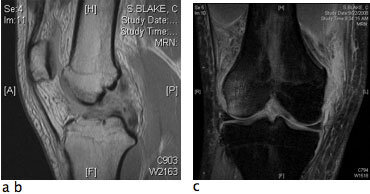
Figure 1:
Figure 1a. X-ray showing dislocated knee. Figure 1b. Corresponding ACL/PCL injury on MRI. Figure 1c. Grade 3 MCL injury in same patient on MRI. This knee was treated with ACL/PCL/MCL reconstruction.
Surgical Treatment of Knee Dislocations and Multi-Ligament Knee Injuries
Most multi-ligament knee injuries require surgery to restore stability to the knee. There are two approaches towards treating these injuries. The first approach is a staged approach. The collateral ligaments (MCL/LCL) can be repaired acutely several days after injury in certain cases, particularly in avulsion injuries where the collateral ligament has pulled cleanly off the bone. After some healing of the collateral ligaments has occurred, the surgeon then proceeds with reconstruction of the ACL/PCL at a later date.
The second approach involves a single surgery with reconstruction of both the collateral ligaments (MCL/LCL) and the cruciate ligaments (ACL/PCL) in a delayed fashion 3-6 weeks after injury after swelling and range of motion have improved. While range of motion and swelling are improving, the knee is stabilized with a long hinged brace. The correct surgical approach is individualized based on the type and severity of the knee injury.
What to Expect
- Surgical treatment of multi-ligament knee injuries is usually performed as an inpatient with a one to two night hospital stay.
- Surgery can last 3-4 hours depending on the complexity of the injury.
- Allograft (donor) tissue is used for the reconstruction of each injured ligament.
- The cruciate ligaments are reconstructed arthroscopically through small incisions, but the collateral ligaments do require an incision for reconstruction or repair.
- After surgery the knee is placed in a brace and a cold therapy device is used to ice the knee
- The brace is locked in extension and crutches are used for the first two weeks.
- Gentle range of motion and partial weight bearing is initiated between weeks 2-6.
- The brace is removed at 6 weeks and full weight bearing is allowed.
- Near normal walking and range of motion is expected to return at 3-4 months after extensive physical therapy.
- Strengthening of the leg continues until months 9-12 when return to sports is usually allowed in a custom hinged knee brace.
- Multi-ligament knee injuries are very severe injuries. Despite a well-done surgery, range of motion deficit, strength deficit, limp, pain, knee instability, and limitation during sports can persist. Early arthritis in the knee can also develop.
Multiligament Knee Reconstruction Photos
Figure 2a and 2c. Torn ACL and PCL after multiligament knee injury. Figure 2b and 2d. Arthroscopic photos after ACL and PCL reconstruction arthroscopically using allograft.
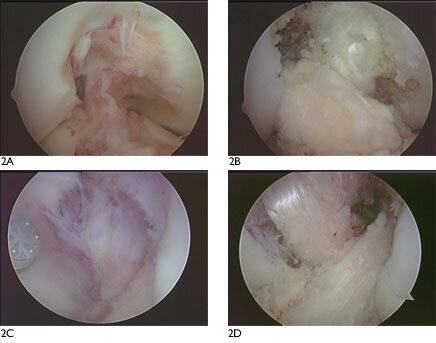
Figure 2:








